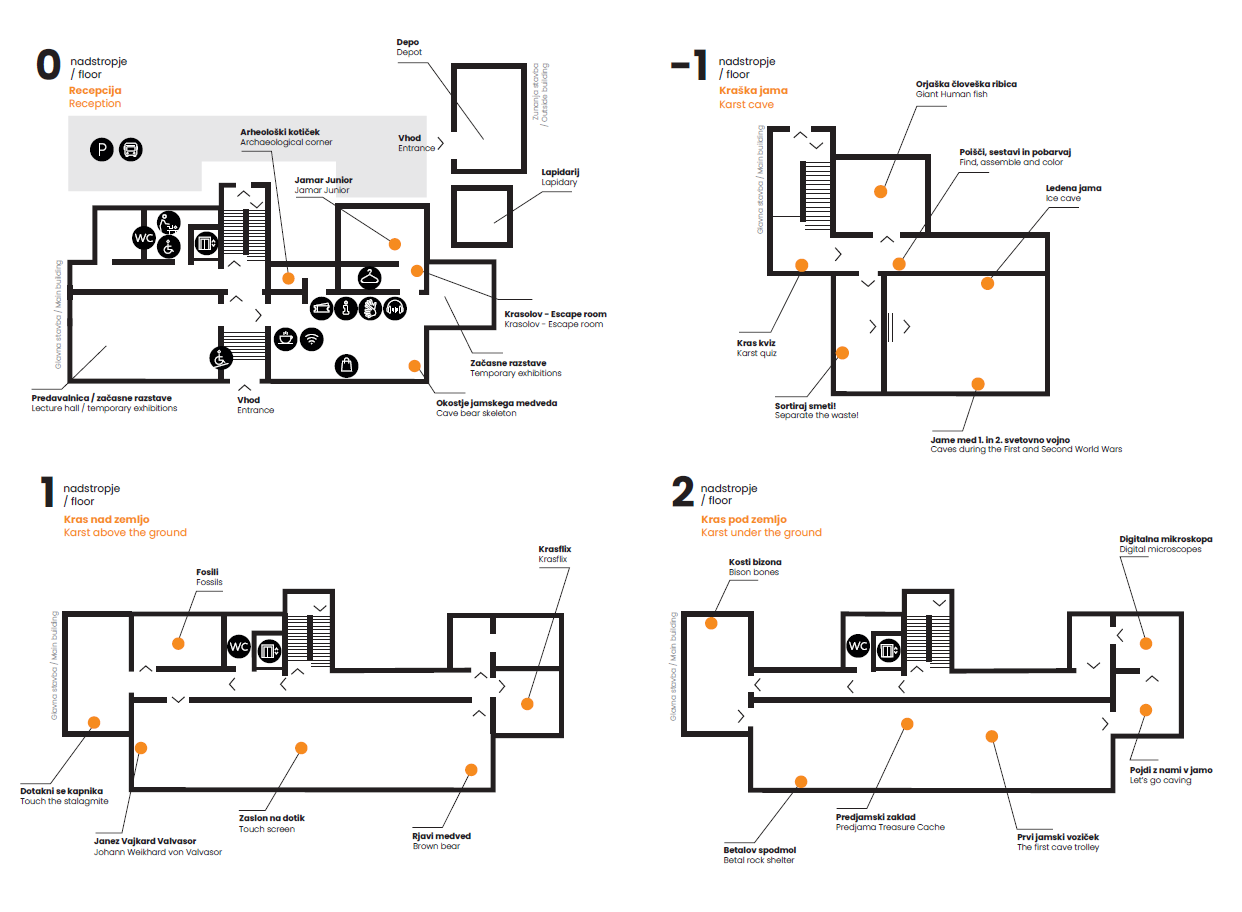Kolodvorska cesta 3
6230 Postojna
KRAS, Karst Museum
The Notranjski Museum Postojna is proud of its permanent exhibition Museum of Karst, which spans two floors and basement spaces. This unique museum display presents in a modern and interactive way the formation of karst, karst caves as the greatest phenomenon, and human life and work in this rocky landscape.
On the first floor, through geological history, visitors learn about the formation of karst enabled by water-soluble rocks – primarily limestone and dolomite. The dissolution of limestone has created a landscape with distinctive surface and underground forms known as classical karst. Slovenian karst is the cradle of karstology, as systematic scientific research of this phenomenon began much earlier here than elsewhere in the world. Postojna, with its cave, speleological institute, and museum, today represents the world center of cave tourism.
Karst (with a capital K) between the Adriatic Sea and Vipava Valley is the original area from which the very term "karst" derives for similar rocky landscapes worldwide. Slovenian technical terms – polje, sinkhole, doline, uvala – have become international standards.
The second floor is dedicated to the world of eternal darkness – karst caves. They are presented as refuges for Ice Age animals, dwellings of ancestors, hiding places for treasures, and inspiration for modern caving. A special place is reserved for the Predjama Treasure, the museum's greatest treasure.
In the basement spaces, a new interactive exhibition was opened in 2025, complementing the theme of karst caves. The first room is dedicated to natural processes – visitors use multimedia to explore the anatomy of the olm, cave dissolution, and the development of stalactites. The second room shows human intervention in caves: from hiding places during Turkish raids and world wars, ice caves as natural refrigerators, to an ecological note about caves as landfills. The corridor between the rooms is dedicated to caves as religious sanctuaries.
Interactive elements include touchscreen displays, KRAS Quiz for teams, the "Find, assemble, color!" game, a waste sorting station, documentary videos, and object replicas.
Interactive elements include touchscreen displays, KRAS Quiz for teams, the "Find, assemble, color!" game, a waste sorting station, documentary videos, and object replicas.
The Museum of Karst at Kolodvorska cesta 3 in Postojna offers visitors a comprehensive insight into the geological, biological, and cultural heritage of karst – from landscape formation to modern research and interactive experiences.
Floor plan layout
The exhibition spaces extend across two floors and the basement areas of the Notranjska Museum building, located at Kolodvorska cesta 3 in Postojna. A map of the museum is also available in PDF format below.
